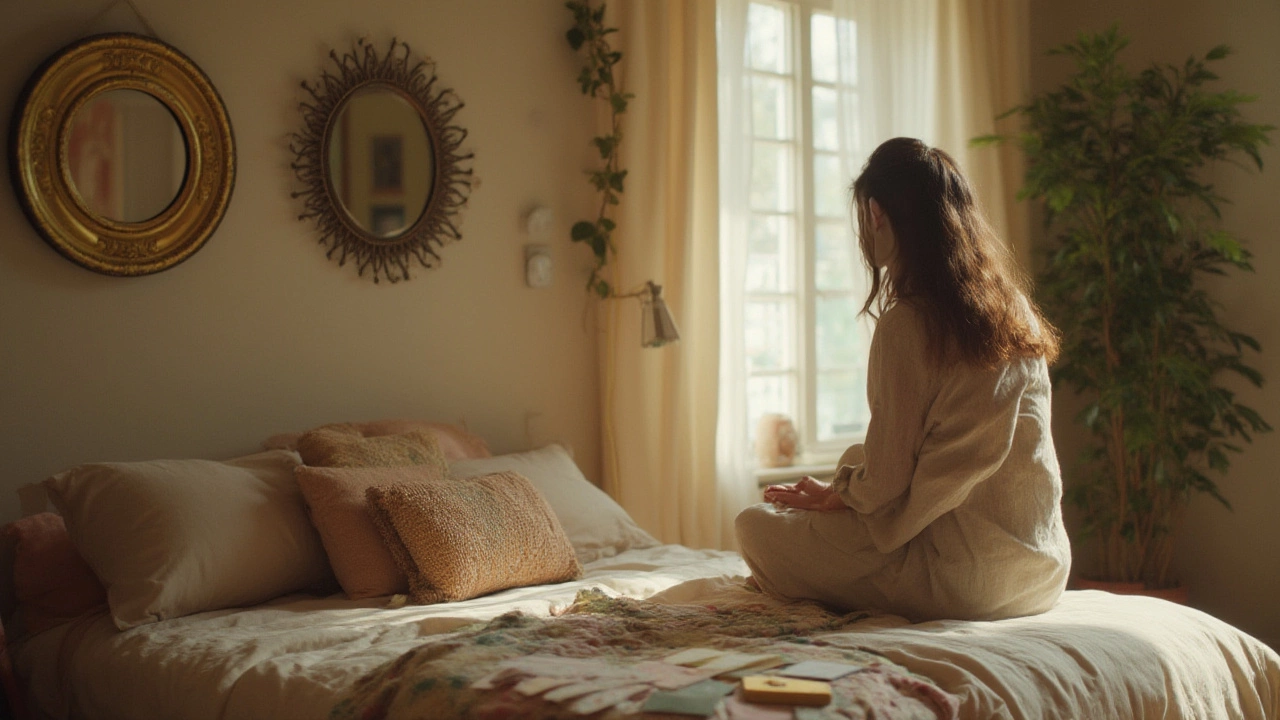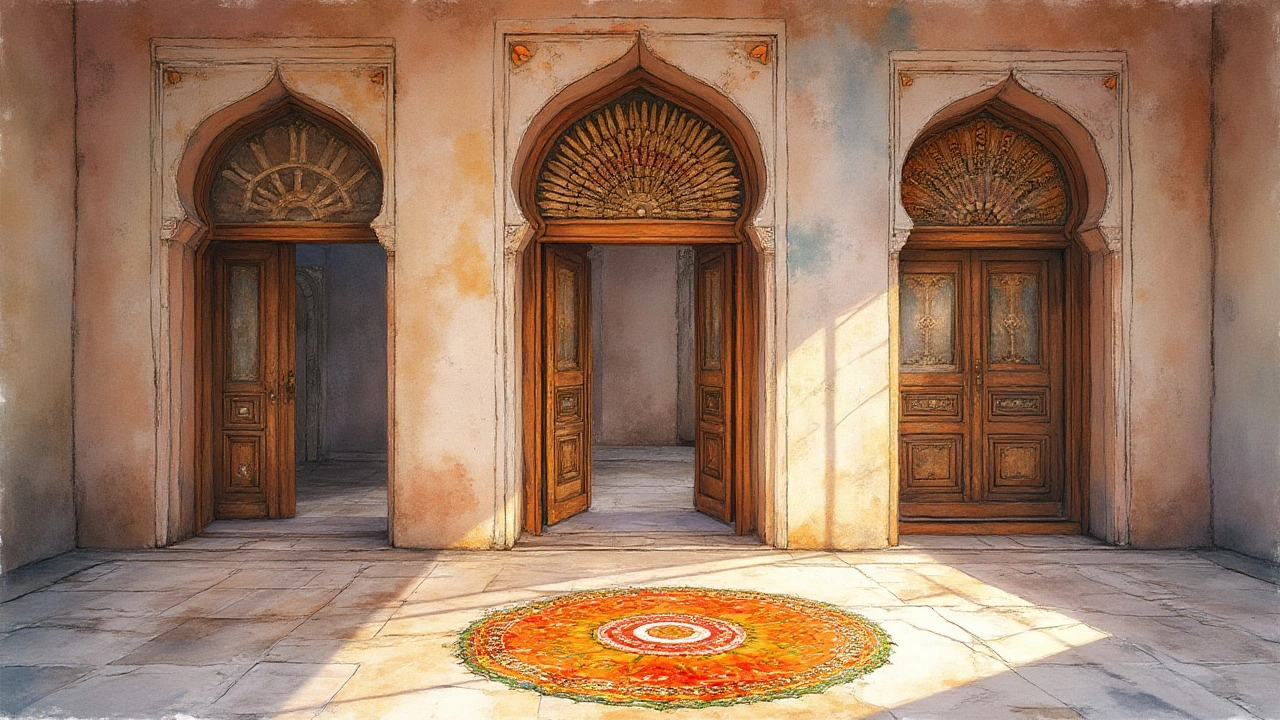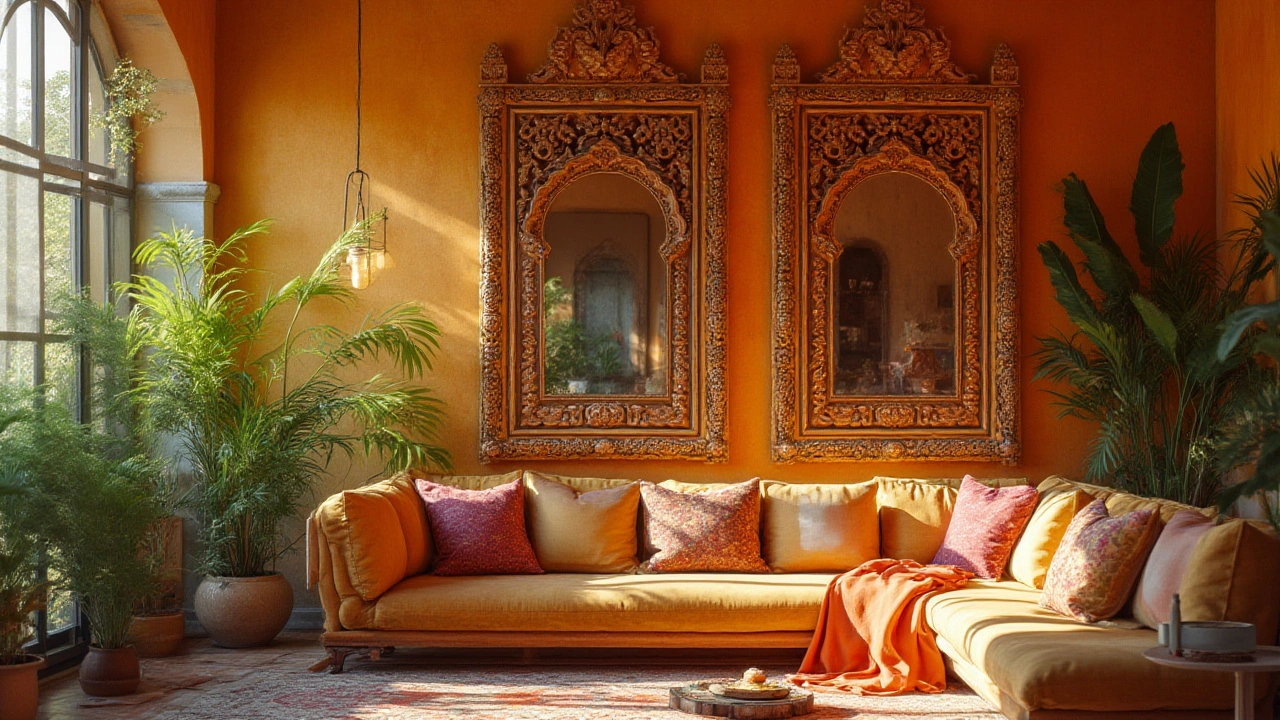Walk into any stylish home and you’ll see it—a mirror that seems to make the whole room feel brighter, bigger, and somehow more ‘put together.’ It’s not magic. Mirrors pack the kind of punch that can turn a cramped hallway into an inviting entry, a bland bathroom into a morning oasis, or give a sleepy living room an instant jolt of energy. But here’s the tricky part: getting the mirror right isn’t some random luck-of-the-draw. People mess this up all the time, and end up with boring bathroom glass or those weird, warped things that turn everyone into a funhouse version of themselves. So what should you really be looking for when picking out a mirror? And, more importantly, how do you make sure you won’t regret it every time you catch your reflection?
Understanding the Impact of Mirrors in Home Decor
Ever noticed how a mirror can hijack a room’s vibe? One big, well-placed mirror will bounce sunlight around dark corners or make your space look like it just grew two sizes. There’s actually psychology behind it! Interior designers use mirrors not only as accents but as tools: for manipulating light, stretching visual space, and even enhancing the mood. Want proof? In a 2024 survey from Houzz, over 60% of homeowners chose mirrors as their go-to trick for making small rooms feel more open. Not only that, but mirrors can also mess with perspective to hide awkward architecture or highlight your favorite nooks.
But don’t just slap any reflective surface on the wall. The style, shape, and finish of your mirror can swing your whole home decor mood, from crisp and modern to cozy and vintage. Consider a chunky wood-framed mirror for a farmhouse vibe, a sleek frameless piece for maximum modern, or an ornate gold number if you love a bit of drama. Even mirrored furniture—coffee tables, cabinets—will change up your ambience. Did you know retailers like IKEA and West Elm report that mirror sales spike in spring? People are on a mission to catch all that fresh light and pep up their homes after winter gloom.
And there’s the science bit: mirrors actually amplify the benefits of both artificial and natural light, so one smartly placed mirror makes lamps work harder or stretches your lone window on cloudy days. No wonder so many staged homes go heavy on reflective surfaces. Think about your favorite spaces in magazines—they almost always use mirrors to dial up the feel-good factor. But to really get the look right, you need to match your mirror to the needs of each room, not just your style whims.
Different Types of Mirrors: Form Meets Function
Okay, let’s get real about options. Not all mirrors pull their weight. There are wall mirrors, floor mirrors, leaning mirrors, and even mirrored panels. Each one has its own vibe, and certain types will just work better in specific spaces.
Wall mirrors are the most versatile—they come in all sizes and shapes. You’ll see round ones above vanities for a soft, classic look, or geometric shapes in entryways and hallways. Floor mirrors, on the other hand, are statement-makers. Propped against a wall, they’re bold and dramatic, and are perfect for bedrooms, dressing areas, or anywhere you want to check your full outfit. Ever tried a mirror wardrobe? Works like a charm to double up closet storage and make a bedroom look much bigger.
There are also specialized mirrors, like anti-fog bathroom mirrors with built-in LED lights, which have been a huge hit in new remodels since 2023. Frameless mirrors keep the look clean and minimalist, while feature frames—think rattan, antiqued metal, or reclaimed wood—offer strong style cues. Don’t forget mosaic and tinted mirrors for a subtle dash of color or pattern. Shape matters, too: round mirrors soften sharp rooms, arched mirrors add a romantic vibe, and rectangles keep things straightforward and modern.
But here’s the thing—mirrors aren’t only about looks. Some offer storage, like those sneaky medicine-cabinet mirrors or entryway mirrors with hooks and shelves. These work double-duty, which is a lifesaver in tight layouts. In high moisture rooms, get a mirror with rust-proof backing. You’ll avoid wavy glass disasters that happen all too often in cheaper options. If you want to go pro, get one with low-iron glass for perfectly clear reflections—no weird green tinge common in bargain mirrors.
| Mirror Type | Best For | Key Feature |
|---|---|---|
| Wall Mirror | Everywhere | Fits any space, styles galore |
| Floor Mirror | Bedrooms, dressing rooms | Full-length view, strong statement |
| Cabinet Mirror | Bathrooms, entryways | Hidden storage |
| LED Mirror | Bathrooms, vanity corners | Built-in lighting, anti-fog |
| Decorative Mirror | Living areas, entries | Shape & frame become a focal point |

Choosing the Right Size and Shape
So you’ve decided what kind, but how big should you go? Size isn’t a one-size-fits-all deal, even for mirrors. To nail it, you really have to work with the room you’ve got. Too small, and your mirror gets lost—or worse, looks like an afterthought. Too big, and it overwhelms the whole wall, shrinking everything else around it. Back in the day, people used tiny mirrors above chunky bathroom sinks. Now, a popular rule is to get one that’s as wide as (or just a bit less than) the vanity itself—think of it as framing, not crowding the space.
If your space is bare, go bigger. Oversized mirrors can fill a wall and make a room look almost endless. Just keep in mind: the reflection is part of your design. Don’t just reflect more blank walls or clutter. Consider the golden rule designers swear by: your mirror should be about two-thirds to three-quarters the width of the furniture it hangs over. Love symmetry? A pair of smaller mirrors can balance a double vanity or cover a console table beautifully.
Now, shape. Round mirrors are everywhere in 2025, mostly because they’re great at breaking up blocky furniture or softening harsh angles. A round mirror above a rectangular console? Insta-chic. Rectangle and square mirrors, though, are classic and reliable—they work basically anywhere. If you’re feeling adventurous, arch-top or irregular-shaped mirrors pack visual punch without being too weird or trendy.
Here’s a concrete trick: use painter’s tape to outline your desired mirror shape and size right on the wall before you buy. This way you won’t wind up with a mirror that feels off. Also, take ceiling height into account—placing a mirror lower in a room with tall ceilings makes walls feel closer, while hanging it higher can add height to stubby spaces. And when in doubt, skip the skinny mirrors (unless you love the funhouse effect, that is). Mirrors under 16 inches across just can’t compete with your furniture or decor; they fade away, literally and figuratively.
Matching Mirrors to Your Room’s Style and Purpose
Now comes the fun part—figuring out exactly how your choose the right mirror move works for each room. This is where you get to play matchmaker: what works in a bathroom doesn’t always hit the mark in the dining room. Let’s walk through a few classic cases.
Bathroom: This room needs good light and a fog-free start every morning. Go for a sizable wall mirror (preferably with good lighting, LED or backlit models if you can swing it). If there’s storage to think of, consider a mirrored cabinet to avoid clutter. Frameless or simple shapes keep it feeling fresh and clean.
Bedroom: Here’s where full-length viewing is a must—or at least a mirror big enough to see yourself, not just your face. Floor mirrors in a corner bring soft glamour, or you could hang a statement piece above the dresser. Avoid placing a mirror directly across from your bed if it makes you feel uneasy at night (an ancient superstition, but still a vibe killer for some).
Living room: Decorative mirrors can double as art in living and lounge spaces. A big mirror behind the sofa or perched above a fireplace can grab natural light and reflect your best angles. Try grouping smaller mirrors for a gallery effect—a trend that’s taken off on Instagram for its visual variety and style flexibility. If you have a bold wall color, a tinted mirror or unusual frame can turn the mirror into the room’s hero piece.
Entryway: This is where first impressions are made. A medium to large round or oval mirror will make even the tightest hallway feel spacious, and gives everyone a last-minute check before heading out. Small entry benches? Use a tall mirror to exaggerate the sense of openness. Need a landing spot for keys and mail? Go for a mirror with a slim shelf or hooks built in.
Want your mirror to do more? Mirrors with integrated LEDs, Bluetooth speakers, or smart features dropped in price loads by 2025, so now is a great time to upgrade. Keep in mind—whatever the room, your mirror shouldn’t reflect things you’d rather forget (toilets, messy piles, bins). Reflect something beautiful, whether that’s a plant, a window with a view, or your favorite picture wall.

Placement Tricks and Mirror Care
Where you hang your mirror can matter even more than which mirror you buy. Most folks hang theirs too high—aim for the center of the mirror to be about 57-60 inches from the floor, which is gallery standard height. If your ceilings are super tall, adjust a little higher, but don’t lose the connection with the room below.
The best light amplifying trick? Place a mirror opposite or diagonally from a window, not directly across (too much glare and backlighting sabotage the effect). Pro tip: a mirror that faces a light source rather than a dark wall will make your room feel sunlit and energizing all day. Table lamps and sconces look even dreamier doubled in a nearby mirror.
Worried about accidents? For families with kids or pets or in earthquake-prone areas, make sure you use sturdy wall anchors or anti-tip hardware for floor mirrors. Some brands now offer shatter-proof glass options—a lifesaver for busy homes. Avoid placing large mirrors in busy corridors where they can be bumped, and skip glass if you notice fogging or corrosion after just a few months—proper backing and moisture resistance are must-haves in bathrooms and kitchens.
And let’s not forget about mirror maintenance. It’s not rocket science, but many glass cleaners leave streaks or weird build-up. For a quick, clear polish, try a mix of white vinegar and water with a microfiber cloth—no paper towels, which can scratch or leave lint. Always wipe in circles and clean edges last. For antique or specialty mirrors, follow specific care guides so you don’t fade out those cool, aged details or etched designs. Be gentle with styled frames (especially wood or rattan), and once in a while, check mounting hardware for safety.
If you’re doing a bigger mirror installation or want to get creative with multiple mirrors, plan for weight and wall type (drywall versus brick or tile). Even smaller decorative mirrors can play tricks on the eye if you lay them out in patterns—rows, grids, or even random clusters give a fresh, whimsical touch to tired walls. Snap a quick phone photo of your planned arrangement before drilling—you’ll spot odd angles and off-balance spots instantly, which is way better than regret later.
No matter your style or space, the right mirror becomes the perfect mix of beauty and smart design. Its job? To shine a light on your best moments, stretch every ounce of daylight, and create rooms that just work—wherever and whenever you need to see yourself, your space, or a fresh new perspective. Why settle for boring blank walls when a great mirror can do so much more?
